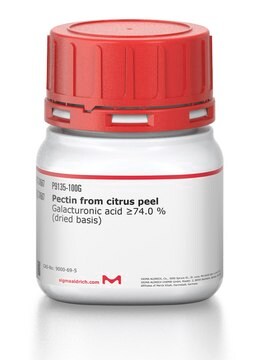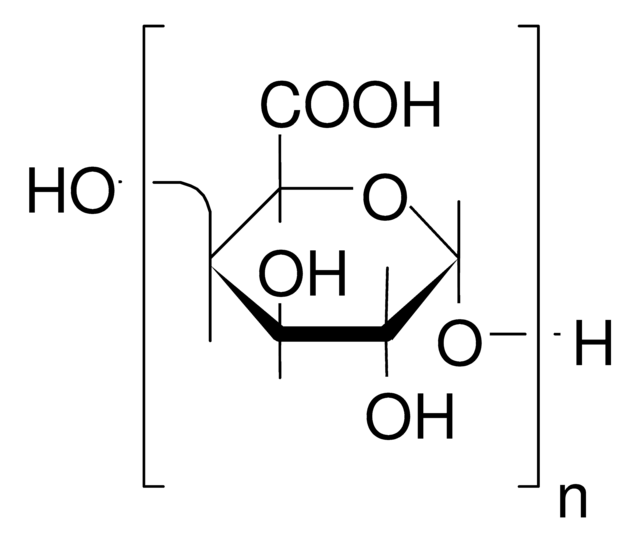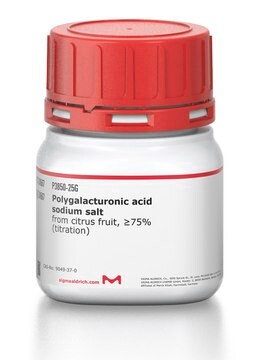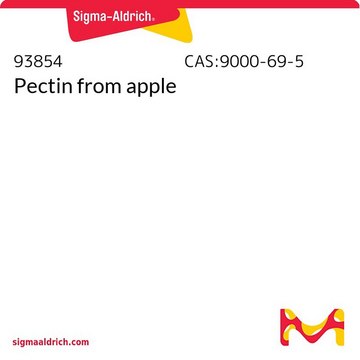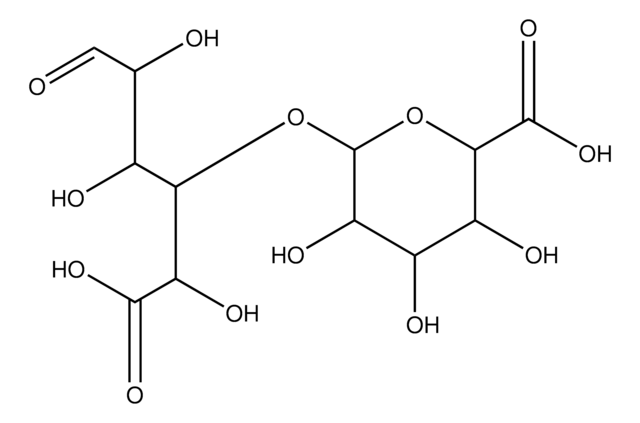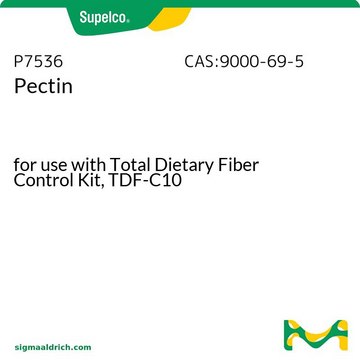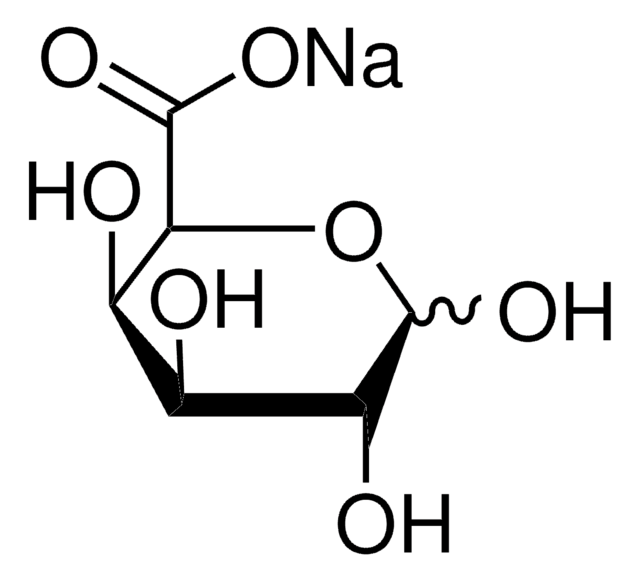P3889
Polygalacturonic acid
≥85% (titration), from oranges
About This Item
Produits recommandés
Source biologique
oranges
Niveau de qualité
Essai
≥85% (titration)
Forme
powder
Couleur
white to brown
Pf
60 °C
Solubilité
aqueous NaOH: 1%, clear to hazy
Température de stockage
room temp
Chaîne SMILES
O1[C@@H]([C@@H]([C@H]([C@H]([C@H]1C(=O)O)O)O)O)O
InChI
1S/C6H10O7/c7-1-2(8)4(5(10)11)13-6(12)3(1)9/h1-4,6-9,12H,(H,10,11)/t1-,2+,3+,4-,6-/m0/s1
Clé InChI
AEMOLEFTQBMNLQ-BKBMJHBISA-N
Vous recherchez des produits similaires ? Visite Guide de comparaison des produits
Description générale
Application
- in the preabsorption of 2F4 primary antibody solution
- as a substrate to determine polygalacturonase activity
- in the preparation of oligogalacturonates mixture which is used as a substrate to determine the specificities of different acetylesterases
Actions biochimiques/physiologiques
Autres remarques
Code de la classe de stockage
11 - Combustible Solids
Classe de danger pour l'eau (WGK)
WGK 3
Point d'éclair (°F)
Not applicable
Point d'éclair (°C)
Not applicable
Équipement de protection individuelle
Eyeshields, Gloves, type N95 (US)
Faites votre choix parmi les versions les plus récentes :
Déjà en possession de ce produit ?
Retrouvez la documentation relative aux produits que vous avez récemment achetés dans la Bibliothèque de documents.
Les clients ont également consulté
Protocoles
Enzymatic Assay of Pectinase
Notre équipe de scientifiques dispose d'une expérience dans tous les secteurs de la recherche, notamment en sciences de la vie, science des matériaux, synthèse chimique, chromatographie, analyse et dans de nombreux autres domaines..
Contacter notre Service technique